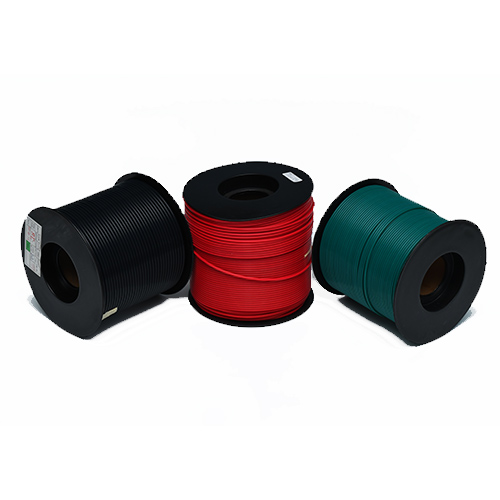Introduction
In the world of industrial materials, PTFE (polytetrafluoroethylene) tubing stands out due to its unique combination of properties that make it suitable for a wide range of demanding applications. As a leading PTFE Tubing Supplier, we understand that procurement professionals have specific concerns when selecting materials for their projects. This article addresses the most important factors that buyers consider when sourcing PTFE tubing, providing comprehensive insights into its characteristics, performance, and applications.

Quality and Compliance
Quality and compliance are paramount in any industrial procurement decision. PTFE tubing must meet several industry standards to ensure safety and reliability. Our products comply with RoHS (Restriction of Hazardous Substances), REACH (Registration, Evaluation, Authorization, and Restriction of Chemicals), and FDA (Food and Drug Administration) requirements. These certifications are crucial for applications in food processing, medical devices, and other sectors where material safety is non-negotiable. Additionally, our PTFE tubing meets the VW-1 flame resistance rating, making it suitable for environments where fire safety is a concern.
Manufacturing Process and Quality Control
The manufacturing process plays a significant role in determining the quality and consistency of PTFE tubing. We maintain rigorous quality control throughout production, starting with the selection of high-purity PTFE resins from trusted suppliers. Our advanced extrusion equipment and skilled technicians ensure precise dimensional tolerances and surface finishes. Each batch undergoes comprehensive testing, including visual inspection, dimensional measurement, and performance evaluation, to guarantee compliance with specifications.
Performance Characteristics
Understanding the performance characteristics of PTFE tubing is essential for selecting the right material for specific applications. PTFE is renowned for its exceptional chemical stability, resisting attack from most acids, alkalis, solvents, and other corrosive substances. This property makes it invaluable in the chemical industry for transporting aggressive chemicals without degradation or contamination.
Thermal stability is another critical feature of PTFE tubing. It can operate within an impressive temperature range of -200°C to +260°C, maintaining its structural integrity and performance at high temperatures without thermal degradation or deformation. This characteristic is particularly beneficial in high-temperature applications such as heat exchangers and chemical processing equipment.
The non-stick property of PTFE is well-known and highly valued in various industries. The incredibly smooth surface prevents substances from adhering, making it ideal for food processing and liquid conveying applications where hygiene and easy cleaning are essential. This property also reduces maintenance costs and downtime in industrial settings.
Electrical insulation properties are another key advantage of PTFE tubing. It exhibits superior dielectric strength and resistance to electrical currents, making it a preferred choice for wire insulation, electrical components, and cable manufacturing in electrical engineering and electronics.
The low friction coefficient of PTFE makes it an excellent material for applications requiring reduced friction and wear. It is commonly used in bearings, seals, and lubrication systems, extending machinery lifespan and improving operational efficiency.
Application-Specific Considerations
When considering specific applications, procurement professionals need to evaluate how PTFE tubing meets their requirements. In the chemical industry, PTFE tubing is widely used for pipelines, valves, and equipment that handle corrosive chemicals. Its resistance to chemical attack ensures long-term durability and reliability in harsh environments.
In food processing, the non-stick and hygienic properties of PTFE tubing make it suitable for food transport and processing equipment. The smooth surface prevents food residue from adhering, ensuring compliance with food safety standards and facilitating easy cleaning procedures.
The medical device sector benefits from PTFE's biocompatibility, which means it is non-toxic and safe for use in healthcare applications. It is commonly found in components such as catheters, tubing, and valves, where patient safety and material compatibility are paramount.
In electrical and electronic engineering, the superior electrical insulation properties of PTFE tubing make it ideal for insulating wires, manufacturing electrical components, and producing cables that require high dielectric strength and resistance to electrical faults.
For lubrication applications, PTFE's extremely low friction coefficient allows it to be used as a solid lubricant or additive in lubricating oils, reducing friction between moving parts and enhancing machinery performance.
Conclusion
As a reliable PTFE tubing supplier, we recognize the importance of addressing these key procurement considerations. Our commitment to quality, compliance, and performance ensures that our products meet the highest standards for your specific application needs. By providing transparent and detailed information about our PTFE tubing, we aim to assist procurement professionals in making informed decisions that enhance their operational efficiency and product reliability.




